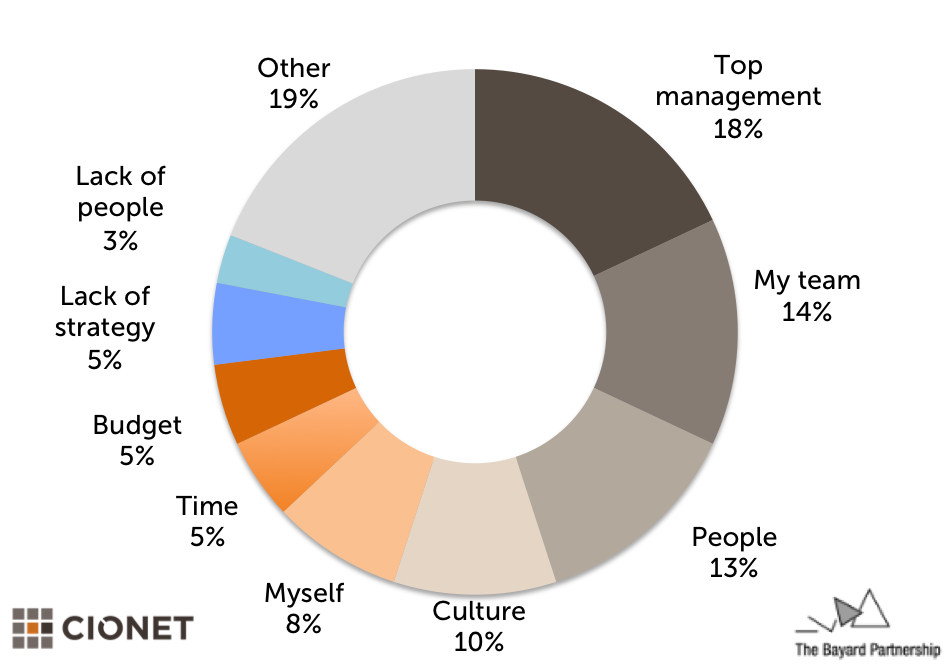
This is a guest post of Harley Lovegrove, who provided an interactive keynote presentation at CIO CITY, in which he asked the attending CIOs what is holding them back in their day-to-day job. In this article, Harley reflects on the feedback he received from the audience:

At the digital leadership summit CIO CITY'16 I challenged the attending CIOs with a question: When it comes to implementing great ideas, what holds them back the most? My precise question was:
“Imagine at this conference you came up with the perfect idea for your organisation, what would be the first block for you to overcome?”
My question was part of my key-note speech ‘Leadership in the digital age’, where I argued that leadership (as in the words of Patrick Thomas, CEO Covestro AG) was about ‘taking people somewhere other than where they are headed’). And in order to do that, the challenge of great leadership was largely about over coming fear, both that of the leader and the people they are leading. I drew from history that like all great leaders, CIO’s in the digital age need to have a powerful vision of how things could be and then inspire those around them to make it happen.
There were more than 150 CIO’s in the room from all over the world, representing organisations, governments and business of all shapes and sizes. Perhaps not the biggest surprise ever, but most CIO’s blamed their first major change resistance challenge on their senior management teams, however what did surprise me was that the next biggest single reason was blamed on their own teams, either due to pure people resistance (risk aversion, narrow mindedness, not invented here syndrome, fear of change, etc. etc.).
From this one can logically deduce that if the CIO’s of the world are finding it difficult to influence their own teams to go in new directions, then it can be of no big surprise that they are also having trouble overcoming resistance from their management teams too.
The early results of the data received, clearly shows that the biggest benefits for the CIO’s organisations might not come from deploying new technologies and applications alone but from engaging effective leadership and change management lobbying techniques.
The pie chart below shows the primary areas of resistance as first analysed from my hotel room this morning.

One CIO wrote” my biggest challenge is in convincing other people to take my ideas seriously”. Perhaps it is this lack of influence and communication capability that keeps CIO’s out of the big decision making process at board level? After all, you cannot imagine a similar response from Marketing or Sales director, or could you?
My plan now is to study the feedback data more carefully and consult with my Bayard colleagues to see how best to explore any possible next steps.
We will keep you posted!
No Comments Yet
Let us know what you think